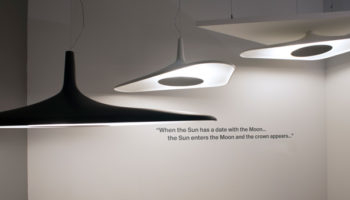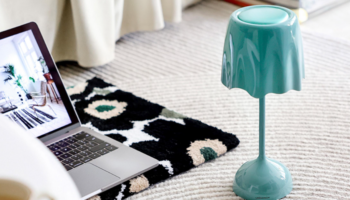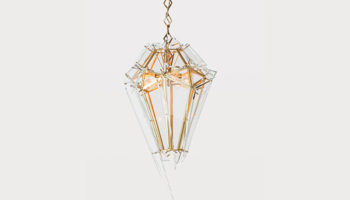Artemide Would Like to Re-introduce You to Ettore Sottsass’ Callimaco
You know you’re feeling the relentless march of time when a lamp dating from 1982 is dubbed a “classic.” In my tenure thus far at 3rings, I’ve seen an 80s piece treated as an icon of design past precisely once before—Fiam’s Ghost Chair dates back to 1987, so I guess I shouldn’t feel too bad about the re-ascendance of Ettore Sottsass’ Callimaco Floor Lamp. The piece debuted the same year that Olivia Newton John’s “Physical” and John Cougar’s “Jack and Diane” topped the charts. I’ll forgo judgment on the one art form and just say that the other has shown a more refined species of longevity.
Callimaco Floor Lamp. Designed by Ettore Sottsass for Artemide.
The aesthetic endurance of Callimaco is largely owed to Sottsass’ long-lived career and consistent refusal to be pinned down to any single identifiable style. The designer was born in Innsbruck, educated in Milan, educated in a different way during WWII, and instructed in industrial design courtesy of Olivetti, where his relative inexperience didn’t prevent him from dreaming up the contemporary coup of the Valentine Typewriter. His subsequent travels in the U.S. and India further broadened his perspective—harnessed to full effect, perhaps, in the experimental and Dylan-influence “Memphis Group,” a consortium of architects and designers dedicated to creating provocative products that often featured shiny surfaces, gaudy colors, and crooked or excessively asymmetrical profiles.

Sottsass created Callimaco during the Memphis tenure, but that doesn’t mean the piece follows the party line. The tall floor lamp is simple and simply geometrical—the base matches the top for its cone-shaped silhouette, though the former exceeds the latter in size by about three to one. These two components are joined by a cylindrical aluminum shaft done up in bright gold paint (perhaps the only nod to the gaudy tendencies of Memphis). The diffuser is stainless steel painted lipstick red, and the base is the very same stainless done up in contrasting pewter gray.
Looking at Callimaco, I’m reminded of those Erté posters ubiquitous at the time. As with that artist’s preoccupation with the architecture of letters and numbers, there’s something elemental in the clearly delineated shapes, the hyper-real colors, the interplay between contrast and similarity found in Callimaco. Even with the link to this pronounced cultural marker, Sottsass’ piece endures—small wonder that both Moma and Jerusalem’s Israel Museum (and manufacturer Artemide) have chosen to preserve it for posterity.




Leave a Reply